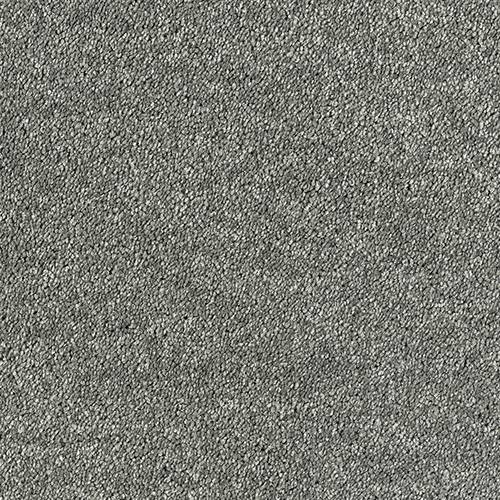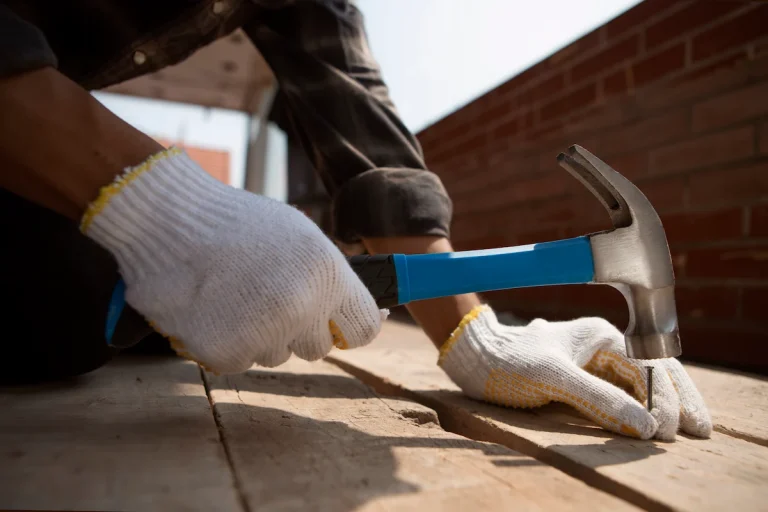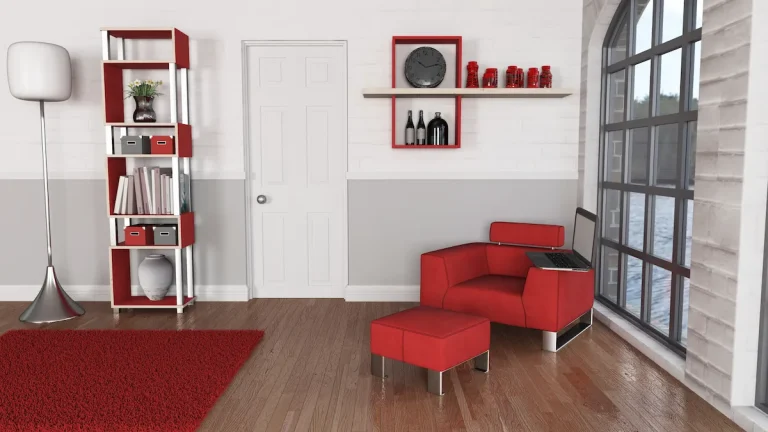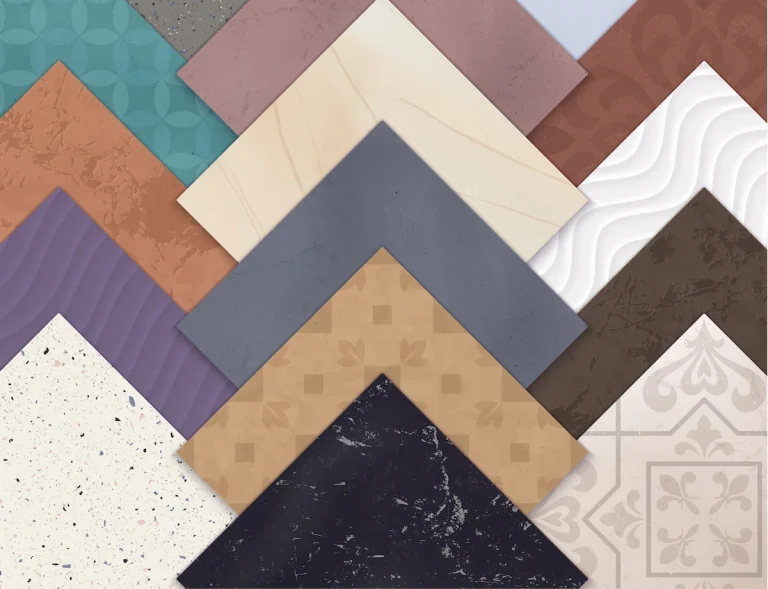Transitioning from carpet to laminate flooring can revitalise a space, providing a contemporary aesthetic while improving durability and ease of maintenance. This article examines the nature of laminate flooring and addresses the question of whether it can be installed over carpet. It outlines critical factors to consider, the most effective methods for carpet removal, and the necessary steps to prep the subfloor for installation.
Furthermore, it discusses the various types of thresholds used when transitioning from carpet to laminate, including Z bar and Ramp or 2 Way Ramp, offering installation tips and highlighting the advantages of making such a change. Whether an individual is a DIY enthusiast or seeking professional assistance, this guide aims to facilitate a seamless flooring transformation with effective installation techniques and appropriate flooring accessories.
What Is Laminate Flooring?
Laminate flooring is a multi-layer synthetic product designed to replicate the appearance of wood, stone, or other natural materials, providing an aesthetically pleasing finish while ensuring durability and resistance to moisture. It typically comprises a core layer made of high-density fibreboard (HDF), a printed design layer, and a protective overlay, making it suitable for a variety of residential and commercial applications.
Laminate flooring presents a cost-effective alternative to solid wood or stone, with options such as waterproof laminate available for areas susceptible to high moisture. Popular choices include Pergo Timbercraft which is known for its resilience and attractive finishes.
The innovative design of laminate flooring not only enhances its visual appeal but also guarantees long-lasting performance in high-traffic areas. Its versatility allows homeowners and business owners to select from a wide range of finishes, from rustic wood grains to sleek stone appearances, facilitating easy integration with any interior décor. When properly installed, this flooring can withstand regular wear and tear without compromising its aesthetic integrity. Self-adhesive trims and laminate floor edging can be used to provide a professional finish.
Key benefits of laminate flooring include various flooring options such as:
- Durability against scratches and dents, making it a durable flooring choice
- Ease of cleaning and maintenance, ensuring long-lasting beauty
- Installation options that range from do-it-yourself to professional services, including installation instructions for ease
- Availability of environmentally friendly options for those concerned with sustainability
Choosing laminate flooring not only provides an attractive solution but also offers practical advantages, making it a prudent choice for contemporary spaces, whether for home renovation or a DIY project.

See product: Elka 8mm V-Groove Country Oak
Can Laminate Flooring Be Installed Over Carpet?
While the idea of installing carpet to laminate flooring may appear convenient, this practice is typically discouraged due to several critical factors that can adversely affect the effectiveness and longevity of the flooring installation.
Installing laminate directly over carpet can result in an uneven surface, reduced stability, and the potential for damage to the laminate edges. The use of proper flooring transition pieces like Z bar or square profile can help mitigate these issues.
Therefore, it is recommended to remove the carpet prior to proceeding with laminate installation to ensure a clean and dry subfloor, which facilitates effective installation and optimal performance.
The removal of carpet is crucial not only for achieving a level surface but also for mitigating moisture retention issues that may arise beneath the carpet, which can lead to mold and mildew growth. An uneven subfloor can significantly compromise both the aesthetic appeal and durability of laminate flooring.
To initiate this process, the following steps should be undertaken:
- Clear the room of furniture and other obstructions.
- Cut the carpet into manageable strips for easier handling.
- Address any remaining tack strips or staples to ensure a smooth foundation.
This procedure establishes the groundwork for a successful installation, wherein ensuring a level subfloor is paramount. After the carpet is removed, the subsequent step involves inspecting the subfloor for any imperfections, which may require the use of levelling compounds to achieve a perfectly flat surface. For best results, consider baseboard replacement if necessary.
Employing self-adhesive trims not only provides a professional finish but also complements the laminate flooring by covering expansion gaps, thereby creating a seamless transition between different flooring types.
Factors to Consider Before Installing Laminate Flooring Over Carpet
Before attempting to install laminate flooring over carpet, it is essential to consider several factors that can significantly influence the success of the laminate installation and the overall performance of the flooring transition. Key considerations include the type and condition of the existing carpet, the level and cleanliness of the subfloor, and the presence of moisture barriers. Each of these elements can affect not only the installation process but also the longevity of the new flooring. Floating floors may also be a suitable option depending on the circumstances.
When planning the installation, property owners must ensure the complete removal of the carpet to create an appropriate base. Residual carpet materials can lead to uneven surfaces, which may compromise both the aesthetic appeal and durability of the laminate. Additionally, achieving a level and clean subfloor is critical, as any irregularities may result in issues such as warping or cracking over time. This necessitates:
- Inspecting the subfloor for any damage or debris that may impede adhesion, using tools from an installation kit if necessary.
- Using a moisture-resistant adhesive if moisture levels are a concern, particularly in areas susceptible to humidity. This is essential for areas like bathrooms where waterproof laminate is recommended.
- Considering flooring transitions to facilitate seamless integration with adjoining rooms, using options such as Z bar or square profile trims.
By taking these steps, property owners can enhance the installation experience and ensure a durable and visually appealing flooring solution for years to come, whether using laminate wood flooring or other types of laminate flooring.
How To Transition From Carpet To Laminate Flooring
Carpet to laminate flooring transition necessitates a strategic approach to ensure the effective execution of the installation process, ultimately resulting in a seamless transition that enhances the aesthetics of the space. Tools like a flooring installation kit and laminate door bars can assist in this process.
The process encompasses several key steps, including:
- Removal of the carpet
- Preparation of the subfloor
- Installation of the laminate flooring along with the appropriate flooring accessories
Each stage must be meticulously managed to avoid common pitfalls, ensuring that the laminate edges are finished properly and delivering an attractive and durable floor. The use of laminate floor trims and Z bar transitions can help achieve a professional finish.
The Best Way To Remove Carpet Before Installing Laminate Flooring
The most effective method for removing carpet prior to the installation of laminate flooring involves a systematic approach that ensures the underlying subfloor is clean and adequately prepared for a successful flooring installation.
Begin by using a utility knife, box cutter or Stanley knife to cut the carpet into manageable strips, facilitating easy removal. After the carpet has been pulled up, it is essential to address any remaining carpet underlay and adhesive residues on the subfloor, ensuring a clean and dry surface for the new laminate flooring.
Once the strips are cut, carefully detach them from the skirting boards to prevent any damage to the walls. While carpet underlay typically comes up with the carpet, there may be instances where additional effort is required. In such cases, using the utility knife to slice through stubborn sections is advisable.
- Following the removal of the underlay, it is important to check for any staples or nails that may be left behind, as these can interfere with the installation of the new flooring. Pliers or a crowbar should be used to extract these fasteners. An angle grinder may be useful for stubborn fasteners.
- Subsequently, it is crucial to vacuum the entire area to eliminate dust and debris that could compromise the adhesion of the laminate.
- To dispose of the old carpet and underlay in an environmentally responsible manner, consider recycling options or transporting the materials to a local waste disposal facility that accepts such items.
After all remnants have been cleared, thoroughly inspect the subfloor for any damage; it is vital to repair any imperfections. Proper preparation of the subfloor is a key step in achieving a flawless installation of laminate flooring. The use of moisture-resistant adhesives and solid brass trims can enhance the installation.
How To Prepare The Subfloor For Laminate Flooring
Preparing the subfloor for laminate flooring is a critical step that directly influences the quality and longevity of the flooring installation. To ensure a successful application, it is essential for the subfloor to be level, clean, and dry, devoid of any debris or moisture that could compromise the laminate. This preparation process typically involves levelling the subfloor, utilising moisture-resistant adhesives if necessary, and installing an appropriate underlayment that enhances both comfort and sound absorption.
Investing time in the comprehensive preparation of the subfloor can significantly impact not only the aesthetic appeal but also the durability of the finished product. Initially, the subfloor should be inspected for any inconsistencies that may lead to an uneven surface during installation. Levelling is of utmost importance and can be achieved through the use of self-levelling compounds for larger discrepancies. Following the levelling process, it is imperative to focus on cleaning the area thoroughly.
Key steps in this cleaning process include:
- Removing any dust, dirt, and debris.
- Consider vacuuming and mopping to ensure the area is entirely clean.
- Inspecting for any signs of moisture damage or leaks.
In instances where moisture is a concern, the installation of a moisture barrier can provide essential protection for the laminate against potential warping or damage over time. Suitable materials for this barrier include polyethylene sheets or specialised underlayments that offer enhanced moisture resistance, thereby ensuring a reliable foundation for the laminate flooring.
The Tools And Materials Needed For Transitioning From Carpet To Laminate Flooring
To successfully transition from carpet to laminate flooring, it is essential to have a variety of tools and materials to ensure effective installation and a polished final appearance. Key tools include a box cutter or utility knife for the removal of carpet, an angle grinder for any necessary adjustments, and various flooring accessories such as laminate floor trims and skirting boards to facilitate a smooth transition.
Additionally, having moisture-resistant adhesives readily available can aid in securing the laminate and enhancing its longevity.
Furthermore, the inclusion of a tapping block is crucial, as it allows for the snug fitting of planks without damaging the edges. A pull bar is also recommended, particularly for the final rows of flooring, as it ensures a tight fit against the wall. Essential protective gear, such as safety goggles and knee pads, should not be overlooked to maintain safety and comfort during the installation process.
- Flooring underlay: This layer is vital for sound absorption and moisture protection.
- Rubber mallet: Ideal for tapping planks into place without causing damage.
- Measuring tape: Ensures precise cuts and fitting.
By being adequately equipped with these tools, one can achieve a seamless transition from carpet to laminate flooring, thereby enhancing both the aesthetics and durability of the space.
What Is A Carpet To Laminate Threshold?
A carpet to laminate threshold is a crucial transition element that creates a seamless connection between carpeted areas and laminate flooring, thereby enhancing both the aesthetic and functional aspects of the flooring transition.
These thresholds, which may include options such as Z bars and laminate door bars, effectively cover the gap between different flooring types. This ensures a smooth transition that mitigates tripping hazards while simultaneously contributing to the overall design of the space.
The Different Types Of Carpet To Laminate Thresholds?
There exists a variety of carpet to laminate thresholds, each specifically designed to meet distinct flooring transition requirements and aesthetic considerations. Common choices include Ramp or 2-Way Rampthresholds, which provide a gentle slope for seamless movement between different flooring types, as well as solid brass trims that add a touch of elegance and durability to the transition area. Selecting the appropriate threshold is essential for ensuring both functionality and visual appeal in the connection between carpet and laminate flooring.
Among these options, thresholds are available in materials such as aluminium and wood, each serving unique purposes and contributing to the overall aesthetic of the space. Aluminium thresholds are often favoured for their strength and resistance to wear, making them particularly suitable for high-traffic areas. In contrast, wood thresholds offer warmth and a classic aesthetic that harmonises well with various design themes.
- Ramp or 2-Way Ramp: These thresholds are best suited for seamless transitions where mobility is essential, effectively minimising tripping hazards.
- Flat Thresholds: Ideal for installations where the height difference is minimal, ensuring a smooth and uninterrupted surface.
- Reducer Strips: These are effective for transitioning from a thicker carpet to a thinner laminate, providing a gradual change that enhances both safety and style.
Each of these features not only helps maintain the integrity of the flooring but also plays a critical role in enhancing the overall aesthetic appeal of the space.
Which Type Of Carpet To Laminate Threshold Is Best For My Flooring?
Selecting the most suitable type of carpet to laminate threshold for flooring transitions involves careful consideration of several factors, including the specific flooring options chosen, the height differential between the two floors, and the desired aesthetic. Key attributes such as durability, weather resistance, and design compatibility are critical in determining which threshold will offer the most effective solution for a seamless transition that satisfies both functional and stylistic requirements.
When assessing the appropriate type of threshold, it is essential to evaluate the flooring height differences, as this will dictate the style and type of threshold needed. For minimal height differences, a transition stripmay be adequate, facilitating a smooth visual flow. Conversely, significant height disparities require the use of a wedge or reducer to ensure both safety and aesthetic appeal.
Furthermore, considerations regarding durability, weather resistance, and design aesthetics are paramount. A threshold designed to endure varying conditions will not only enhance the longevity of the flooring but also maintain its visual appeal over time.
Ultimately, by carefully weighing these factors, one can select a threshold that not only complements the overall decor but also fulfills performance requirements, thus ensuring a beautifully finished space.
How To Install A Carpet To Laminate Threshold
Installing a carpet to laminate threshold is a straightforward process that can greatly improve the overall flooring transition within a home, ensuring a seamless connection between the two distinct types of flooring.
The installation process involves measuring the appropriate length for the threshold, cutting it to size if necessary, and securely affixing it to the subfloor using suitable adhesives or fasteners. Adhering to proper installation guidelines is essential for maintaining a clean and safe transition area.
The Steps For Installing A Carpet To Laminate Threshold
The procedure for installing a carpet to laminate threshold is vital for achieving a professional and visually appealing transition between flooring types, while also adhering to safety standards. The process begins with measuring the width of the doorway or the area designated for the threshold. If necessary, the threshold should be cut to fit appropriately.
Subsequently, it is essential to secure the threshold in place using suitable adhesives or fasteners, ensuring it is flat and properly aligned with both flooring surfaces.
To achieve a successful installation, precision in measuring the doorway is crucial. A measuring tape should be used to accurately assess both the width and any irregularities that may impact the fit of the threshold. If the existing threshold does not conform to the required dimensions, it should be clearly marked, and a saw should be employed to make clean cuts, thereby preventing splintering of the laminate.
- After cutting the threshold, it is important to position it accurately and check for any gaps or misalignment.
- To enhance stability, the use of a levelling tool is recommended to ensure that the threshold sits evenly.
- Ahead of securing the threshold, it is imperative to clean the surface to eliminate any dust or debris that may hinder adhesion.
Proper alignment is not only crucial for aesthetic purposes but also plays a significant role in maintaining safety during regular use, as it helps to prevent tripping hazards that may arise from uneven transitions between flooring surfaces.
Tips For A Successful Installation Of Carpet To Laminate Threshold
To ensure a successful installation of a carpet to laminate threshold, several key considerations can significantly enhance the quality and appearance of the flooring transition. It is essential to confirm that both surfaces are smooth and level prior to attaching the threshold, as this will help prevent any gaps or potential tripping hazards. Additionally, utilising a moisture barrier or an adhesive compatible with both carpet and laminate materials, such as Pergo Timbercraft, will contribute to optimal durability.
Attention to detail during the installation process can lead to notable improvements. The following practical tips should be observed:
- Proper Surface Preparation: Ahead of commencing the installation, it is imperative to clean the subfloor meticulously to eliminate dust, debris, and any existing adhesives. Ensuring that both the laminate and carpet edges are cut straight will facilitate a seamless transition.
- Adhesive Selection: Employ a high-quality, latex-based adhesive that offers robust bonding for the specific materials involved, such as the Premier SQ laminate. Adherence to the manufacturer’s recommendations regarding curing times and application methods is strongly advised.
- Alignment: Throughout the installation process, it is crucial to double-check the alignment of the threshold, such as using a Z bar or Ramp, to confirm that it is straight and properly centred. This step is vital for maintaining both aesthetic appeal and functionality over time.
By adhering to these guidelines, one can achieve a flooring transition that is not only visually appealing but also durable.
The Benefits Of Transitioning From Carpet To Laminate Flooring for a Home Improvement Project
Transitioning from carpet to laminate flooring presents several advantages that can significantly enhance the overall quality of a living space. These benefits include increased durability, simplified maintenance, and a visually appealing aesthetic upgrade.
Laminate flooring is engineered to endure wear and tear more effectively than carpet, making it particularly suitable for high-traffic areas. Furthermore, laminate is resistant to stains and spills, offering a low-maintenance flooring solution that preserves its appearance over time.
Transitioning from carpet to laminate flooring presents several advantages that can significantly enhance the overall quality of a living space. These benefits include increased durability, simplified maintenance, and a visually appealing aesthetic upgrade as part of a comprehensive home improvement project.
Laminate flooring is engineered to endure wear and tear more effectively than carpet, making it particularly suitable for high-traffic areas. Furthermore, laminate is resistant to stains and spills, offering a low-maintenance flooring solution that preserves its appearance over time.
Transitioning from carpet to laminate flooring presents several advantages that can significantly enhance the overall quality of a living space. These benefits include increased durability, simplified maintenance, and a visually appealing aesthetic upgrade.
Laminate flooring is engineered to endure wear and tear more effectively than carpet, making it particularly suitable for high-traffic areas. Furthermore, laminate is resistant to stains and spills, offering a low-maintenance flooring solution that preserves its appearance over time.
The Common Mistakes To Avoid When Transitioning From Carpet To Laminate Flooring
When transitioning from carpet to laminate flooring, it is essential to recognise several common mistakes that can compromise the effectiveness of the installation and potentially lead to long-term issues. These errors include inadequate preparation of the subfloor, failure to remove all carpet remnants, improper prep of the sub-floor, and the selection of an inappropriate transition threshold.
By being aware of these pitfalls, homeowners can facilitate a smoother installation process and achieve a more durable and visually appealing flooring result.
Upgrade Your Floors: From Carpet to Laminate with TEKA Flooring
Switching from carpet to laminate flooring is a transformative upgrade that brings style, durability, and practicality to your home. Laminate offers a sleek, modern look with the added benefits of easy maintenance and improved resistance to wear and tear, making it an excellent choice for busy households.
At TEKA Flooring, we specialise in helping homeowners make seamless transitions to their dream floors. With our wide range of laminate options and professional fitting services, we ensure your new floors not only look stunning but also stand the test of time.
Ready to elevate your space? Contact TEKA Flooring today to explore our selection of laminate flooring and experience expert service tailored to your needs. Transform your home with ease and style—let TEKA Flooring bring your vision to life!
Read also:

































